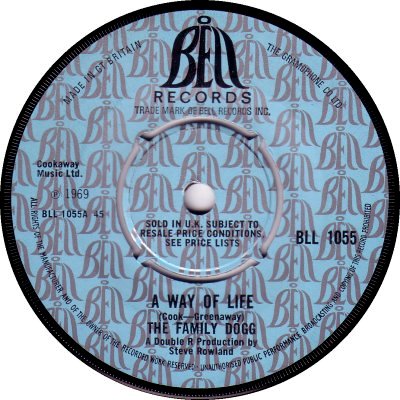
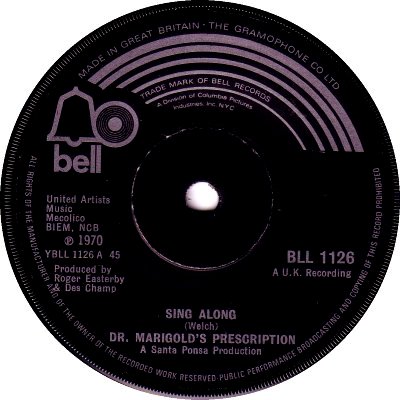
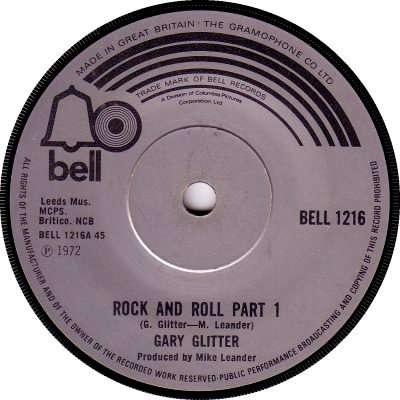




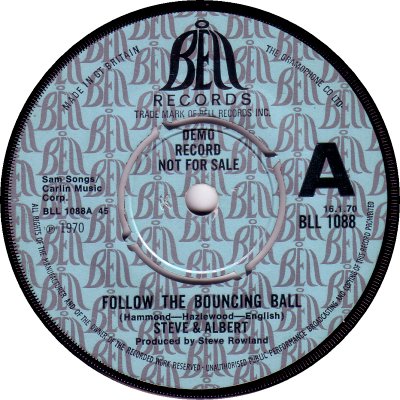
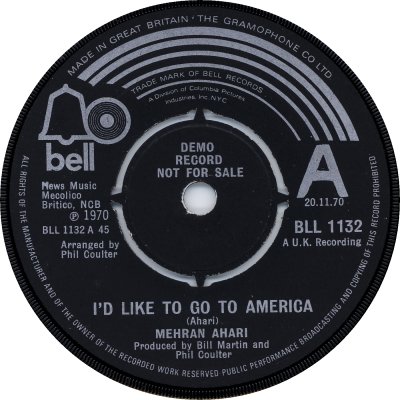
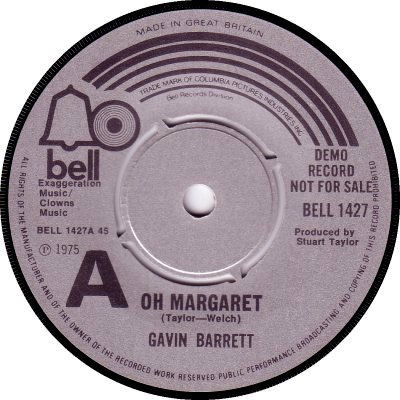

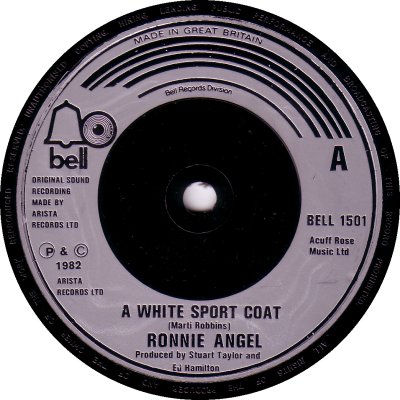
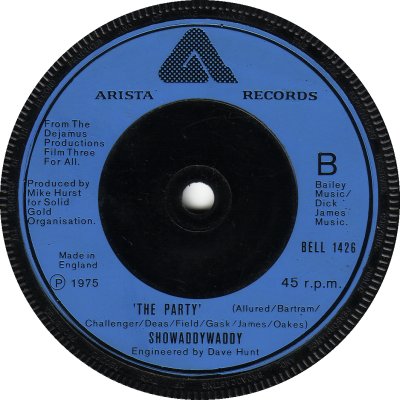

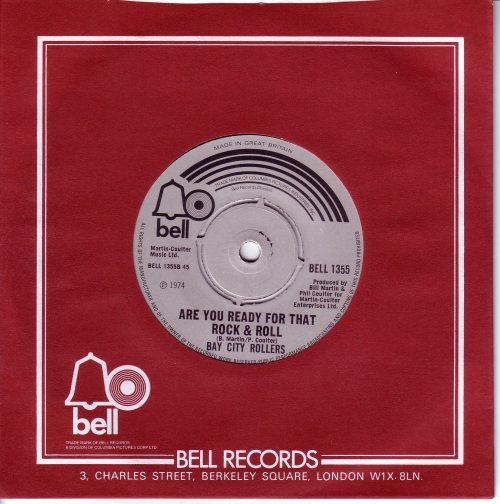
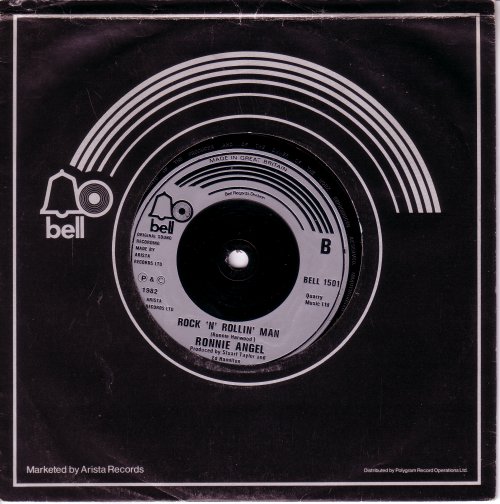
American. Bell began life in 1954, with Arthur Shimkin as company president; it specialized in popular music and comedy. In 1961 it was purchased by Larry Uttal along with its sister-labels Mala and Amy; Uttall concentrated on the latter two until 1964, at which point he brought Bell back to life. Bell went on to enjoy a considerable amount of success, and when all three labels were sold to Columbia Pictures Industries in March 1969 Mala and Amy were merged into a single unit with Bell, under the Bell name. After the sale Uttal stayed on as president and part-owner, but in May 1974 sold his interest in the company after a financially disappointing year and departed to set up Private Stock records (q.v.). Clive Davis, previously president of the CBS Records Group, was brought in to organize a restructuring of the company with an eye to the growth of its recording activities ('Billboard', 8th June 1974). In the event the restructuring involved the launch of Arista Records (q.v.) in December 1974, and the consequent discontinuation of the Bell label in the States, Bell's artists being transferred to Arista.
In Britain, some of Bell's early material was licensed by EMI and released on Stateside; then in 1967 a three-year licensing deal was signed by the two companies, which led to Stateside featuring Bell product more frequently. Bell made its debut as an actual label in March 1968. 'Record Retailer' of the 31st of January broke the news of the planned launch, and the issue of the 21st of February confirmed the launch date. The latter article observed that part of Bell's strength had been its acquiring and handling of masters from independent producers. For the first year the new label's material was all American, but 'RR' of the 1st of January 1969 reported that Bell was finalizing deals with two independent UK producers, and that as a result it hoped to release its first UK-sourced records in March. The company had ambitions for Britain: it set up its first UK office the following year ('RR', 4th April 1970), and then set about separating itself from EMI. 'RR' of the 21st of August 1971, commenting on the development, said that the change was prompted by the need for 'a greater degree of autonomy' and for full control of product and promotion; Bell's current licensing agreement with EMI was to become a pressing and distribution one. 'RR' of the 11th of December added that the singles prefix was to change from BLL to BELL at the time of independence, which it duly did. The establishment of an autonomous British operation proved successful. 'Billboard' of the 27th of October 1973 was able to report that it had grown rapidly since its establishment in January 1972; and a report given to shareholders by Columbia Pictures executives in November 1974 claimed that during the fiscal year the British division was the only part of Bell that had achieved satisfactory results.
Bell scored the occasional hit here in the '60s but only really got into its stride in the '70s, when, thanks to Gary Glitter, Showaddywaddy, the Bay City Rollers, David Cassidy, Dawn, The Drifters and various others, its name and its silver label became synonymous with Pop of the Glam, Teen, Soul and MOR varieties. In April 1973 it enjoyed the distinction of having its singles occupying the Top 3 positions in the Chart: Dawn's 'Tie A Yellow Ribbon Round The Old Oak Tree' (BELL-1287) was at No.1, while David Cassidy's 'I'm A Clown' (MABEL-4) held the No.2 spot and Gary Glitter stood at No.3 with 'Hello! Hello! I'm Back Again' (BELL-1299). Presumably because of its success and its recognition factor the Bell label retained its identity for a while after Arista had replaced its counterpart in the USA, but its scope was restricted - according to 'Billboard' of the 14th of December 1974 it was to operate alongside the new Arista label and was to feature only British products from that point. New signings were to be given the option of having their records released on Bell or Arista. A report in 'Music Week' of the 18th of January 1975 said that Bell had renewed its pressing and distribution deal for a further three years; but in September 1976 came an announcement to the effect that the Bell label was to be phased out, with Arista becoming the sole outlet. Clive Davis was quoted as saying that there was no reason for Bell to have a separate identity in Britain any longer, and that while at one time it had stood for a certain kind of sound its artist roster had broadened and matured. In addition, he said "New artists almost always preferred to be on Arista anyway". By the end of the year all artists on the Bell roster had been transferred to Arista. The last single to be issued on Bell was BELL-1495, Showaddywaddy's 'Under The Moon Of Love', which provided a triumphant exit for the label by reaching No.1 in the Charts. Some copies of this and other popular singles can be found on Arista with the Bell catalogue number (11); these may have been either reissues or re-pressings, but in either case they date from after the Summer of 1977. Arista revived Bell in June 1981, but to no great effect. A couple of Gary Glitter singles got into the lower reaches of the Top 50 and one by Showaddywaddy nearly broke into the top 30, but the glory days were over. Catalogue numbers started where they had left off, at BELL-1496; the very last Bell single was Ricochet's 'In Car Stereo' b/w 'What Do You Make Of Love' (BELL-1505), which came out in August 1982.
Bell used several label designs during its existence: a striking blue-and-silver one in the late '60s (1) was replaced by a black one with a new logo in February 1970 (2) starting at BLL-1096; the silver one (3), which is arguably the best known, came into use in January 1971, with BELL-1140, and remained until the label closed down, though the black and silver label made a very occasional reappearance (4). There was an alteration in the text at the top in August 1973, with the reference to 'The Gramophone Co.' being dropped (5); most of the EMI labels went through a similar change. At the same time the 'trade mark' reference within the arcs at the top was also altered, from Bell Records to Columbia Pictures. The first single with the adjusted label was BELL-1323, though later pressings of earlier popular singles can be found with the new wording. Some popular singles from the '70s can be found with injection moulded labels (6); these were contract pressings, made by Phonodisc. The early '80s issues also were injection moulded (12), and they had a black sleeve (16); I don't normally include scans from the '80s but I thought that these were relevant. Demo copies up to April 1969 (BLL-1056) were coloured green, after the EMI style of that time (3), while from that point overprinted issue labels were used (8, 9). The 'A' on the silver labels got smaller from around June 1975, and the font of the 'Demo' wording changed; they stayed that way until March 1976 (10), after which time a mixture of the sizes was used. I have given my Bell discography a separate page because it's bulky; to reach it, click the link.
('Both Sides Now'; www.bsnpubs.com)


Copyright 2006 Robert Lyons.

